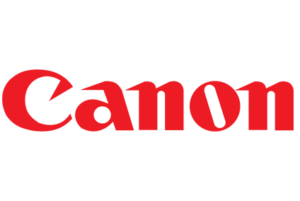With the growing popularity of thin display technology, the flat screen television market is facing an upward demand for 65-inch and larger displays that support 4K and 8K ultra-high definition video.
In its awareness of this trend, Canon U.S.A., Inc., a leader in digital imaging solutions, announces the launch of the new MPAsp-H1003T, a flat panel display (FPD) lithography system. The display manufacturing solution is capable of resolving 2.0 micrometer Line/Space (L/S) features across Generation 8 glass panels1, making one-shot exposure of 65-inch displays possible.
Market needs are expected to shift toward high-quality Ultra HD Premium2 certified products exemplified by organic LED (OLED) televisions. The MPAsp-H1003T contributes to highly-efficient mass production of high-quality, 65-inch panels utilizing Generation 8 glass panels, helping to meet the demand for ultra-high definition displays.
Canon FPD lithography systems employ a Reflection Projection Optical System for one-shot exposure and feature a wide-field exposure that enables manufacturing of large panels. Thanks to a newly developed projection optical system and proprietary Canon processing technology, the wide-field MPAsp-H1003T achieves the same 2.0 micrometer L/S resolution as its predecessor model, the MPAsp-H803T released in June 2013.
The MPAsp-H1003T also increases the Canon FPD lithography system maximum area for one-shot exposure of displays from the previous limit of 58 inches to 65 inches, resulting in a 37% reduction3 in cycle time for 65-inch display exposure versus previous models.
Along with the demand for higher-resolution patterning for high-definition flat panel displays, pattern overlay accuracy has become an increasingly important part of the manufacturing process. Non-linear (distorted) components are considered the primary cause of diminished overlay accuracy. To mitigate this problem, the MPAsp-H1003T uses a combination of a simultaneous multipoint alignment system and magnification compensation technology to achieve a 10% improvement in overlay accuracy compared with previous Canon models.
The MPAsp-H1003T can also employ a dual-inline configuration in which a single coater-developer tool4 supplies two FPD exposure systems. This Multi-Module on Glass (MMG) processing approach exposes two different-sized display panels on a single glass plate to increase process efficiency and productivity. MPAsp-H1003T systems in an MMG configuration utilizing the MPAsp-H803T make possible optimized Generation 8 glass panel mass production without lengthening cycle times.
About Canon U.S.A., Inc.
Canon U.S.A., Inc., is a leading provider of consumer, business-to-business, and industrial digital imaging solutions to the United States and to Latin America and the Caribbean markets. With approximately $36 billion in global revenue, its parent company, Canon Inc. (NYSE: CAJ), ranks third overall in U.S. patents granted in 2017* and is one of Fortune Magazine’s World’s Most Admired Companies in 2018. Canon U.S.A. is committed to the highest level of customer satisfaction and loyalty, providing 100 percent U.S.-based service and support for all of the products it distributes in the United States. Canon U.S.A. is dedicated to its Kyosei philosophy of social and environmental responsibility. In 2014, the Canon Americas Headquarters secured LEED® Gold certification, a recognition for the design, construction, operations and maintenance of high-performance green buildings. To keep apprised of the latest news from Canon U.S.A., sign up for the Company’s RSS news feed by visiting www.usa.canon.com/rss and follow us on Twitter @CanonUSA. For media inquiries, please contact [email protected].
*Based on weekly patent counts issued by United States Patent and Trademark Office.
1Glass panels with dimensions of 2,200 mm x 2,500 mm (width x depth), primarily used in the manufacture of television displays.
2A designation that indicates that a product, such as a display, meets the unified standards for Ultra High Definition performance established by the UHD Alliance.
3Compared with the cycle time required to expose three 65-inch Generation 8 glass panels.
4A device that applies photoresist to the surface of a glass panel prior to exposure, then immerses the panel in a developing solution to remove any excess photoresist.

